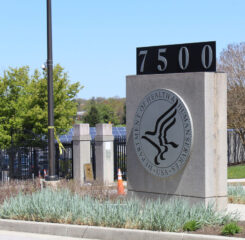Long-Awaited NASEM Nursing Home Quality Report Released
The National Academies of Science, Engineering and Medicine (NASEM) released its long-awaited report The National Imperative to Improve Nursing Home Quality – Honoring the Commitment to Residents, Families and Staff on April 6. At the webinar releasing the report, committee members outlined seven broad goals and associated recommendations that taken together could profoundly change the delivery, financing, and quality of care in nursing homes. The 605-page report and interwoven recommendations drives home the overarching goal to make high-quality, person-centered care equitable, safe and secure for our nation’s aging population. The committee made clear that the recommendations cannot be analyzed one by one, they are interdependent. For example, higher staff wages require higher reimbursement.
LeadingAge is beginning to review the recommendations to ensure that the proposed solutions will improve the quality of care and quality of life provided in the nation’s nursing homes and will not add unnecessary regulatory and reporting burdens. The committee headlined its challenge asserting that “the way in which the nation finances, delivers and regulates nursing homes is ineffective, inefficient, fragmented and unsustainable.” Tamara Konetzka, a committee member who spoke on the LeadingAge Update Call today said that the committee places no blame on any single set of players and it assigns the solution to all – legislators, regulators, advocates, researchers, and nursing homes themselves. During the release webinar, committee members repeated multiple times that “The Time to Act is NOW.”
The committee outlined short and long term actions under its seven recommendations, some of which dovetail with the White House Nursing Home Quality Initiative. These include enhanced staffing requirements, physical environment updates, ownership transparency and accountability, and survey regulation and oversight.
We expect to deepen our understanding and analysis of the report in the coming days and weeks. There can be no doubt that while some shorter range strategies can make a difference, major reforms will be needed to address the gaps and challenges in financing, workforce, reimbursement, regulations, and enforcement.
We do not anticipate that most of the committee’s recommendations will be immediately implemented, as written, by Congress, the Administration, state leaders and others. There will be much discussion and deliberation. But this is an important place to start the work.
LeadingAge hopes this report represents the beginning of a national dialogue about the state of nursing home financing, care delivery, quality measurement, regulatory enforcement, and transparency. We agree that the responsibility to lead change is shared by funders, legislators, regulators, advocates, residents/their families, and providers.
The following sections of this article offer brief summaries and commentaries on the highlights included under each of the seven recommendations.
Goal: Deliver comprehensive, person-centered, equitable care that ensures the health, quality of life, and safety of nursing home residents; promotes resident autonomy; and manages risks.
LeadingAge applauds the emphasis on equitable, comprehensive, person-centered care allowing residents to participate and guide their care in nursing homes. There has been scarce research in models of care across nursing homes providing high quality and ensuring equity. Residents having autonomy in their care planning supports their health and well-being. However, person-centered care needs to be the model for all residents. The committee brings forth the need for evidence-based research to fulfill the critical knowledge gaps. They call on federal agencies and private funding to prioritize research and funds to deliver these crucial care delivery models. The strengthening of care models and the community connection would strengthen the broader health system.
After two years in a pandemic, and countless weather and disaster-related emergencies, LeadingAge praises the recommendations of the committee to prioritize nursing homes in an emergency situation. Having a seat at the table and ensuring that nursing homes and residents are part of state and local emergency management documents and plans will safeguard against a broad range of potential emergencies. The report includes ensuring nursing homes have complete drills, conduct training and have necessary personal protective equipment (PPE) on hand could prevent situations that unfolded during the COVID-19 pandemic. If nursing homes are part of the community, then they need to be seen as a priority partner in emergency preparedness.
The committee additionally recommends structural improvements such as shifts to private rooms and smaller care settings through incentives for new construction and renovation. It remains to be seen what type of incentives are available amidst so many competing initiatives that require such significant and as-yet unavailable financial support.
Goal: Ensure a well-prepared, empowered, and appropriately compensated workforce.
Noting that workers in nursing homes are undercompensated for the work they do, the committee recommended competitive compensation, including wages as well as benefits and a variety of incentives and supports to improve the desirability of these jobs. As has been called for in legislative proposals, the committee recommended 24/7 RN coverage and sufficient infection prevention staff to meet the needs of the size and case mix of the nursing home. The committee made the same recommendation as the White House articulated in its Nursing Home Quality Initiative regarding frontline staff: comprehensive research on minimum and optimal staffing standards and updated regulations based on the findings of the research. The report goes into detail about improving training, care advancement opportunities, and expanded roles for Certified Nurse Aides (CNAs). With sufficient reimbursement, called for elsewhere in the report, many of these recommendations, with some modifications, could become reality.
Goal: Increase transparency and accountability of finances, operations, and ownership.
The committee included a recommendation for increased transparency and accountability of finances, operations and ownership, consistent with the White House initiative. The action steps recommended under this goal are to collect detailed facility level data on these attributes in real time, ensure the ability to assess the data by common owner, track quality of care by ownership and assess the impact of ownership models and related-party transactions. The committee suggests that data that CMS collects on ownership be made public, as recommended in 2016 by Government Accountability Office (GAO). LeadingAge supports transparency but will continue to review the detailed recommendations to ensure that providers who already report this information annually are not required to submit additional, duplicative information. CMS leaders told those gathered at LeadingAge’s Leadership Summit last week that the agency is likely to propose regulatory changes related to transparency within the coming year.
Goal: Create a more rational and robust financing system.
The long-term care financing system is incredibly fragmented and under-resourced due to the mix of federal and state funding that is often subject to state budget constraints. This fractured system of financing and eligibility across states often results in a lack of equity and continuity of care. Recognizing that this is simply unsustainable, the committee recommends, among other payment reforms, moving toward the establishment of a federal long-term care benefit that would expand access and advance equity for all adults who need long-term care. Although previous attempts have been unsuccessful and this issue presents an immediate challenge, the report’s recommendation to build on lessons learned and use state-based demonstration programs to test federal benefit models offers a goal worthy of further discussion and evaluation. This is an area where all stakeholders will need to engage with the Administration and Congress to reach a successful outcome.
Goal: Design a more effective and responsive system of quality assurance.
Responding to persistent concerns over survey consistency, the committee recommends strengthened oversight of the survey process. These recommendations apply to both the oversight of the state survey agencies as well as the oversight of nursing home providers by state survey agencies, and are consistent with the White House initiative that proposes to increase funding for state survey agencies in support of staffing and survey activity as well as strengthened oversight of poor performing nursing homes. Of note, the committee took a decidedly different approach to enforcement, recommending expanded use of enforcement options beyond civil monetary penalties. The committee further recommends the use of data for tracking performance and triaging inspections. LeadingAge supports efforts to re-imagine the survey and enforcement process and will continue to advocate for evidence-based processes that focus resources and support quality improvement in an evidence-based way.
Goal: Expand and enhance quality measurement and continuous quality improvement.
The Nursing Home Five Star Quality Rating System and Care Compare are no strangers to criticism and the committee’s focus on quality measurement and quality improvement included recommendations for improvement of these systems. As has been noted previously and was included in the White House initiative, the committee recommends inclusion of measures on resident and family satisfaction, weekend staffing, and staff turnover, as well as examination of self-report measures such as those based on MDS data. Consistent with CMS’s stated goals over the past few years, the committee also recommends measurement of health equity and disparities, and a host of new measures to describe care delivery within the nursing home such as palliative and end-of-life care, behavior health, emergency preparedness and response, and implementation of the resident’s care plan. Interestingly, the committee also recommends measures of staff experiences, including staff satisfaction and employment arrangements.
Promisingly, the committee appears to understand the importance of a collaborative, constructive approach to quality improvement, recommending development of state-based, non-profit, confidential technical assistance programs that meet consistent standards across states and are held accountable through ongoing analysis and reporting on services. This recommendation is consistent with CMS’s current goal of strengthening the Quality Improvement Organizations and could support the committee’s recommendation for enhanced data monitoring to track performance and triage inspections.
Goal: Adopt health information technology in all nursing homes.
An important focus of the presentation was promoting the adoption and interoperability of Health Information Technology (HIT) in all nursing homes. There has been a great deal of study over the past three decades about the role that HIT plays in improving safety and quality while reducing costs of health care delivery. And there has been widespread adoption of Electronic Health Records (EHRs) across hospitals and office-based physician practices due in large part to billions of dollars in financial incentives authorized by Congress. Regrettably, nursing homes have not benefitted from the same financial support provided to other sectors of the health care system. NASEM recognized this challenge and rightfully called on the Office of the National Coordinator (ONC) and CMS to identify a pathway to provide the financial incentives necessary for nursing homes to adopt and implement certified EHR systems that are interoperable with other HIT systems. However, this will require engagement with Congress to ensure that these programs are properly authorized and funded.

 Shutdown Week Three: Impact of Ongoing Closure on Affordable Housing
Shutdown Week Three: Impact of Ongoing Closure on Affordable Housing


